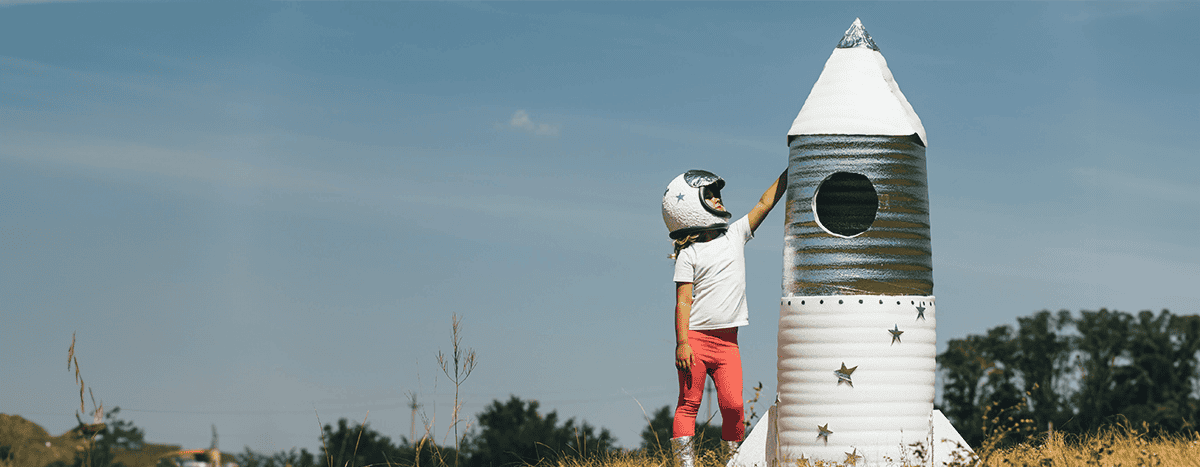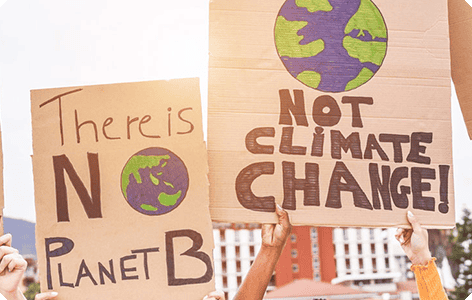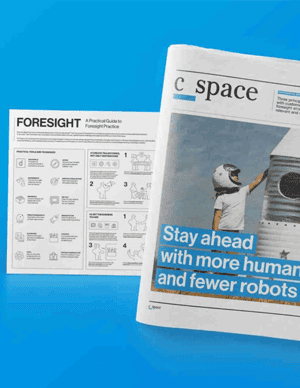Three principles on how co-creating with customers can make your foresight strategy more inspiring, relevant and actionable.
What connects a phone, a horse and voice control?
They are examples of epic prediction fails. These predictions were made by knowledgeable people, who are experts in their field—who got it completely wrong.
- In 1901, the president of the Michigan Savings Bank asserting that horses were “here to stay” and the automobile was a “passing fad.”
- Steve Ballmer, ex- Microsoft CEO, chuckling that no one would ever buy an Apple phone.
- Scott Galloway, Professor of Marketing, suggesting voice control as the revolutionary technology that would shake the world.
All bold predictions from experts in their fields, all wide of the mark and evidence of how difficult it can be to navigate the shifting currents of the future. But why did they get it wrong?
Technologists want Star Trek, and humans want a mother.
It’s because “technologists want ‘Star Trek,’ and humans want a mother,” as Lucia Komljen, former Insight and Innovation Strategy Director at Telefonica puts it, when describing the disconnect between the engineers intention for Alexa versus what consumers want and need from an AI Assistant. These experts failed to think about the people who drive the shifts that have built our societies over the last century and will continue to do so in the future.
As an Insight, Strategy and Innovation agency, we’re often asked to help brands understand what’s coming next. It started almost 15 years ago when a fast-food behemoth asked us to imagine the restaurants of the future, and since then, we’ve continued to assess how people’s needs will evolve and the opportunities and challenges this will present for brands.
And today, our Foresight Practice is booming.

Why?
Because these types of shifts are accelerating due to the changes we are seeing across societies and cultures. In the past few years, we have seen social movements (#MeToo, The Greta Thunberg Effect, Black Lives Matter, etc.), political crises (Ukraine, Taiwan, Brexit, etc.), economic disasters (Covid, inflation, China’s closed borders, etc.) and technological advancements (NFTs, AI, etc.). These have all profoundly impacted the established relationships between people and brands.
We may be in what philosopher Derek Parfit describes as “hingey times” – a period where we will experience so much change that it will completely redraw the landscape for people and businesses.
But our take is that fundamental human needs – hopes, fears, relationships – are more fixed than the world that surrounds them. Therefore, as future-focused brands seek to navigate the tensions between what they can offer today and what they should offer tomorrow, focusing on people is the safer route.
In this three-part series, we argue that consumers are just as important as experts, trends and AI predictions in helping brands minimise risk in futures strategies. So, if you’re a brand seeking to future-focus, we thought it would be useful to share learnings from our 15 years of practice and 15 conversations with futures professionals to better understand the consumers of today and tomorrow.
Download our foresight toolkit to find out more about our principles below!

PRINCIPLE 1Create trajectories, not only destinationsHow do we move from crystal-ball gazing to building an intuitive muscle for what’s next? We’ll show how using trajectories to work backwards can help you avoid costly mistakes. |

PRINCIPLE 2Focus on what’s not changingHow do you avoid backing the wrong future strategies? We’ll argue that running consumer experiments can bridge the gap between today and 10 years from now. |

PRINCIPLE 3Get the business to careWhat’s the biggest challenge insight professionals face with Foresight work? It’s making Foresight impossible to ignore. It’s getting the business to care and act. Read on to discover how making Foresight real and human is more likely to drive action internally. |





